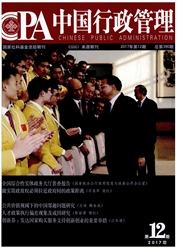

 中文摘要:
中文摘要:
公共冲突中的组织化程度可以根据结构自由度和规则约束力两个维度划分为四种类型:标准组织化、隐性组织化、自由组织化和无组织化。影响组织化类型的因素主要包括制度环境特性、冲突相对方性质、冲突特性、冲突者特性、权威者介入和技术条件限制。在收集的2005—2014年间中国发生的106起公共冲突案例中,组织规则约束力弱的案例占65.09%;组织结构自由度高的案例占60.38%,说明中国公共冲突的组织化程度处于较低水平。组织化程度对公共冲突的暴力程度产生影响:在规则约束力强的案例中,暴力表达案例只占24.32%,而在约束力弱的案例中这一比例却高达71.01%;同样,在结构自由度低的案例中,暴力表达案例只占35.71%,而在自由度高的案例中这一比例高达67.19%。面对公共冲突组织化的不同类型,政府的应对方式也存在着相应的差异。
 英文摘要:
英文摘要:
The degree of organization in public conflict can be divided into four types according to the structure freedom and rule binding: standard organization, hiddenorganization, free organization and non-organization. The factors influencing organizational types include institutional environment characteristics, the nature of the opposite party, characteristics of conflict, the nature of conflict parties, authoritative intervention and the limitation of technical conditions. Among the 106 cases of public conflict in 2005-2014, 65.09% of the organizations are with weak organizational rules and 60.38% of the cases with high degree of organizational freedom, which show that the degree of organization in public conflict in China is relatively lower. The degree of organization has an impact on the extent of violence in public conflict: there is violencein 24.32% of the cases with strong rule binding, while in 71.01% of the cases withweak rule binding. Similarly, there is violence in only 35.71% of the cases with lowstructural freedom, while in 67.19% of cases with high degrees of freedom. Faced with the different types of public conflict organization, there are corresponding differences in government's coping style.
 同期刊论文项目
同期刊论文项目
 同项目期刊论文
同项目期刊论文
 期刊信息
期刊信息
